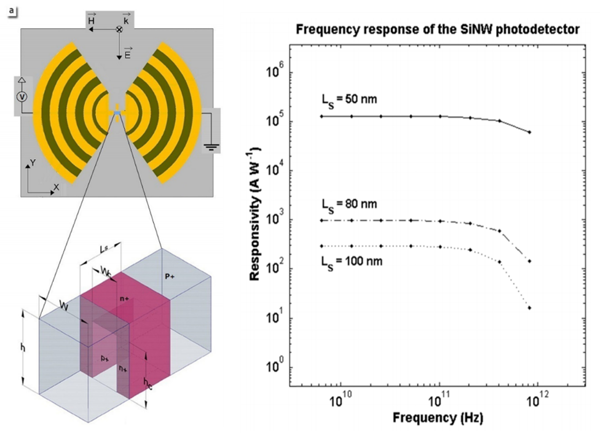The National Natural Science Foundation of China (NSFC) announced the 2018 list of funded projects recently. Four projects of the University of Michigan-Shanghai Jiao Tong University Joint Institute (UM-SJTU JI) were on the list, including two Young Scientist Projects and two General Projects.
The two General Projects are the “biomechanical study of uterine suspended tissue in female pelvic organ prolapse” by Assistant Professor Jiajia Luo and the “metal surface wave antenna enhanced germanium silicon nanowire junction field effect phototransistor” by Associate Professor Yaping Dan, with direct funds of 590,000 yuan and 160,000 yuan respectively. The two Young Scientist Projects are the “research on key technologies of efficient coding cache for 5G wireless networks” by Assistant Research Professor Aimin Tang and the “effect of strain on proton polaron transport in perovskite proton conducting epitaxial films” by Assistant Professor Qianli Chen, with direct funds of 250,000 yuan and 260,000 yuan respectively.

Female pelvic organ prolapse is mainly caused by accidental injury during natural childbirth, but it’s still a myth on why the pelvic organ prolapse occurs 20 to 30 years after the childbirth. Jiajia Luo’s project will recruit and test patients with and without prolapse, measure and quantify the viscoelasticity of uterine suspension tissue and reconstruct the pelvic floor based on MRI images, and establish a patient-specific computer biomechanical model to understand its role in pelvic organ prolapse. The results of this research will help to better understand why muscle damage during childbirth results in prolapse 20 to 30 years later, and improve prevention and treatment programs for prolapse.

Optical circuit hybrid integrated system is the inevitable trend of next generation communication technology. One of the challenges to achieve this hybrid integrated system are high speed and high sensitivity low power optical detectors. Yaping Dan’s project provides an important solution for the next generation integrated optical circuit technology by fabricating a “core-shell” PN junction field-effect phototransistor (as shown above) on a single SiGe nanowire, and fabricating the photodetectors with the highest overall performance with 100 A/W response in the communication band and a 3 dB bandwidth of about 100 GHz.

Coding cache technology is regarded as an effective way to solve data congestion in future networks and received a lot of attention in recent years. Aimin Tang’s project proposed a set of key mechanisms and algorithms for efficient encoding and caching in 5G wireless networks to solve the challenges faced by encoding and caching technologies in 5G wireless networks, such as heterogeneous network architecture, heterogeneous channel conditions, user mobility and so on. The project will focus on the access network, the return network, access and return network integration of the code cache shutdown mechanism and algorithm research. The mechanisms and algorithms designed by this project will be verified by a simulation platform, and typical network scenarios will be run on the simulation platform to show the research results.

Perovskite-type metal oxides have the unique function of conducting protons, and are expected to be used as electrolyte materials to reduce the operating temperature of energy devices such as ceramic fuel cells. However, the performance of proton conducting electrolyte is still not enough to meet the requirements of most device application. Qianli Chen’s project proposed that thin film epitaxy will be used to accelerate proton conduction and understand the mechanism of proton transmission, which will provide new ideas for the development of high-performance proton conductor devices such as solid-state fuel cells and electrolytic cells, and promote the efficient use of clean energy.
In the recent years, JI has been paying high attention to the development of scientific research through taking a number of measures to arouse the enthusiasm of faculty to participate in scientific research, and constantly strengthening the organizational declaration and mobilization training of the national fund. Each year, many JI projects have secured funding.
NSFC aims to promote China’s scientific and technological reform and change the scientific research funding system. It focuses on funding researchers from universities and scientific research institutions with good research strength. Based on the principle of supporting basic research, NSFC has also gradually considered talent programs and environmental conditions. The fund allows scientific and technical personnel engaged in basic research within the scope of funding to choose independent topics, to carry out innovative scientific research and to promote the balanced, coordinated and sustainable development of various disciplines. The Young Scientist Fund mainly supports young researchers to carry out basic research work, cultivate their ability to carry out independent innovative research and infuse new blood into China’s basic research.





